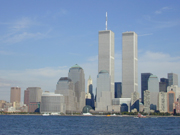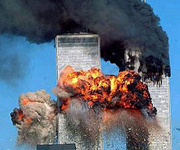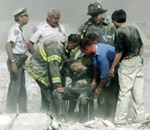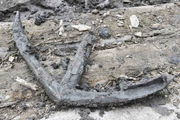In September, 2001, Rudolph Giuliani seemed closer to his retirement than to his prime. For the latter half of his last term, he had been plagued with personal battles in two fronts: his prostate cancer and his tabloid-feeding divorce.
In fact, the world itself seemed to be on hiatus. The Cold War was over and a strange sense of uneventfulness had taken over international relations.
In just a few hours, all that changed.

Ever since September 12, 2001, it is redundant to retell the story of how, between 8:46am and 9:03am, two planes had crashed against New York's iconic Twin Towers the previous day. The fact that its 2,752 victims made it the largest attack committed on American soil; the fact that its ramifications dramatically and permanently changed the newborn 21st century, are now well-known truths.
The tales of palpable heroism emerging from the very Big Apple -- from the hundreds of fire fighters and policemen that risked and lost their lives to save what victims they could to the city's overwhelmingly empathic reaction -- are things best detailed by other narrators. Or better yet, best discovered for yourself in your visit (hint: take the Staten Island Ferry).

That was a day of unforgettable horror. At the time the superlatives used to describe it went a bit too far (Auschwitz remains the maximum horror ever seen by mankind), but now it is (justly) remembered for the unforgettable sight of the Twin Towers engulfed in a scorching orange bubble, reduced to a sizzling metal morass. There are, however, two other memorable images that allow us to remember what that day was all about down in the ground.

The first memory takes us back to core of that bleakest of days. For a couple of hours after the attacks were first reported and the images started looping on televisions all over the planet, the world remained in shock. There were millions of questions in the air. But they were silent hours. The world was crying out for a leader, but President Bush took quite some time to address the nation.
By the time he did, though, New Yorkers already had an figure to cling to. A chubby, bald man, crossing the streets near Ground Zero at a double quick pace, covered in dust and yelling orders into a megaphone.
It was Rudy Giuliani and he was in charge.
The second image brings us forward nine years to July 14, 2010. To a 30-meter wooden skeleton being unearthed from Ground Zero by the workers preparing the site for reconstruction. It couldn't be part of the wooden cribbing used in the early 19th century to extend the shoreline of Lower Manhattan (even back then, Manhattan real estate was a problem). Rather, experts agreed, it had to be part of a wood-hulled vessel from the 18th century, which had been abandoned in what used to be a dumpster now 30 feet below the ground.

It was a sight of poetic beauty. Not just for the irony of a remnant of the past popping up in a site always popularly associated with the future, but also because, even in the geographic center of its biggest scar, the identity that New York had forged for itself during its founding years kept coming back. Unabated. Short of the hunt of the author of 9/11, Osama Bin Laden (that wouldn't happen until May 1, 2011 in Abbottabad, Pakistan, after a decade-long, Moby Dick-esque chase), it was the closest thing to closure New Yorkers could ever have.
Archaeologists had to rush to the site to protect the wood from falling apart due to the exposure to open air. And it made it all more adequate -- in New York, you always have to rush.
It is also proof that the past in New York doesn't always disappear.